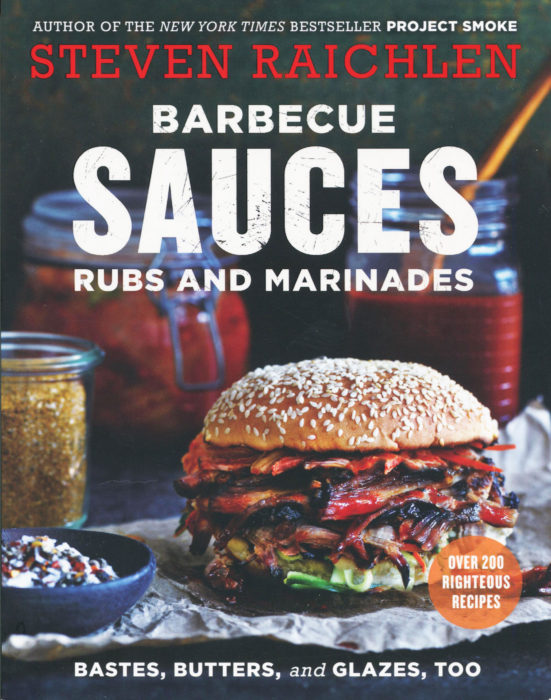
Stephen Raichlen is one of America’s foremost barbecue gurus. He was trained for this from his college days. He was a French Lit major at Reed. Okay, French to fire? He went Paris and studied cooking, surely easier with fluency in French. And then he’s gone on to write a dozen award winning barbecue-oriented cookbooks and a cluster of TV shows.
He is, in other words, a very intelligent barbecue god.
This is the second iteration for this book. An earlier version, published in 2000, forms the foundation for this new release, available just this May.
The book resembles the barbecuing world. There is an amazing universe of techniques we use when barbecuing [or grilling or smoking]. We apply seasonings and rubs, we employ marinades and pastes and cures and brines, we may baste or mop, we may slater on a sauce. And, if we are doing that sauce, we may make it from scratch or doctor something from the store. It may be mustard-based or ketchup or vinegar.
All those barbecue journeys appear in the book’s chapters running over 330 pages. There is dual importance to this book. First, naturally, are the recipes, reflecting decades of testing, perfecting and world travel. Second, are the insights: why do we have all these different ways of preparing our meat, which should you use when, and — surely vital — when you put something on your meat, how long do you wait until you start to cook.
Barbecue components are often made with potent combinations of liquids, spices, chiles and more. Too little time on the meat and your preparation effort goes unrewarded. Too much time, and your meat can have a flavor profile that, well, might seem excessive. There is only so much that beer can do!
So, good barbecuing is intelligent barbecuing. You want to know the why and what and how. And it is just that information that bubbles on every page.
While Americans think that barbecue is “ours” the entire world loves fire, meat and flavor. That’s why my favorite chapter in the book is World Barbecue Sauces. Forget the tomatoes and the cumin. Consider these ideas:
Chimichurri: Argentine Parsley-Garlic Sauce
Mojo: Cuban Citrus-Garlic Sauce
Ajilimojili: Puerto Rican Pepper Sauce
Mole Poblano: Mexican Chocolate-Chile Sauce
Salsa Criolla: Columbian Creole Sauce
Aji Amarillo: Peruvian Yellow Pepper Sauce
French Rouille: Saffron-Roasted Pepper Sauce
Georgian Tkemali: Rhubarb Sauce
Beijing Barbecue Sauce
Mam Nem: Vietnamese Pineapple-Shrimp Dipping Sauce
I think this world-tour chapter is the perfect reason to dip into this gem by Steven. The other chapters, like the one for marinades, are equally worldly with ideas like the fiery French West Indian Scotch Bonnet-Lime Marinade. But, if you just to stay American, never fear. You’ll find a Chipotle Chile Marinade, a Honey Cure or brine, and a fine Texas Peach Barbecue Sauce. There is something for you here, from some part of the world, with the just the combination of heat and sweet that you want.
If you grill, you want to adorn your meat perfectly. This book is that perfection in 200 smokin’ recipes.
